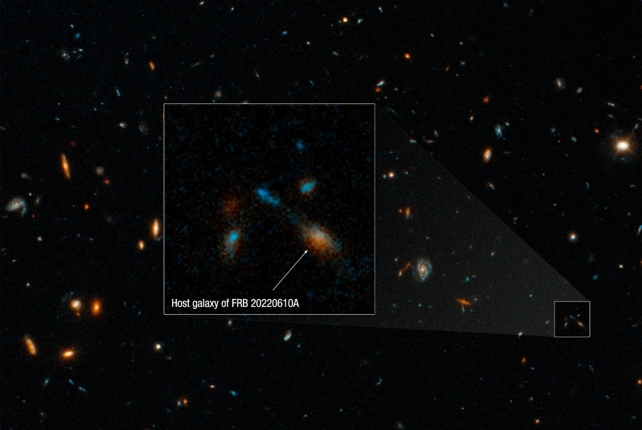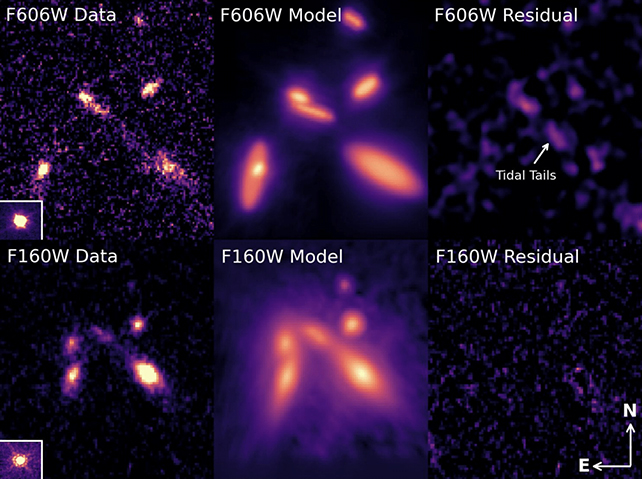Surprising Origin Identified for the Most Potent Fast Radio Burst Ever Recorded
Fast radio bursts (FRBs) are enigmatic bursts of radio waves originating from deep space, possessing an intensity that matches their mysterious nature.
Astronomers have successfully traced the source of the most potent and farthest-traveling FRB ever detected to a closely-knit assemblage of seven galaxies. This discovery provides valuable insights into the diverse environments capable of generating such intriguing bursts of light.
Named FRB 20220610A, this burst emanates from within the cluster, as indicated by recent imagery captured by the Hubble Space Telescope and analyzed by an international team of researchers. These findings suggest that the interactions within this cluster may contribute to the creation of the burst.
This particular transmission has defied some of the most widely accepted theories regarding the functioning of the Universe, prompting astrophysicists to contemplate the specific conditions under which FRBs may originate.

Astronomer Alexa Gordon, from Northwestern University, emphasizes the significance of Hubble’s imaging in unraveling the origin of this FRB. Without it, the question of whether it originated from a single galaxy or an interacting system would remain a mystery. Gordon further highlights that studying these peculiar environments is crucial for gaining a deeper understanding of the enigma surrounding FRBs. To provide perspective on the vast distance traveled by this FRB, consider that the Universe is approximately 13.8 billion years old.
The signal we are receiving from FRB 20220610A dates back to a time when the Universe was merely 5 billion years old. Initial observations of the amorphous blob near the FRB’s source led researchers to speculate the involvement of multiple galaxies. However, the discovery of seven galaxies was unexpected. Notably, these galaxies are densely packed together and could all fit within our own Milky Way.

The close proximity of these galaxies suggests that they are likely interacting with each other in various ways. If stars are forming rapidly, this could explain the strength of the FRB.
According to astrophysicist Wen-fai Fong from Northwestern University, there are indications that the members of this group are interacting. This implies that they may be exchanging materials or potentially merging together.
These compact groups of galaxies are extremely rare in the Universe and represent the densest structures on a galaxy scale that we currently know of.
FRBs continue to captivate scientists with their changing signals and the mystery surrounding their origin. The prevailing theory is that they originate from cosmic objects such as neutron stars or black holes.
This study serves as a reminder that as our telescopes improve, allowing us to observe space with higher resolutions, we will be able to uncover more answers about these enigmatic signals.
Dong adds, “By studying a larger sample of distant FRBs and connecting them to nearby ones, we can explore the evolution of FRBs and their host properties. This may even lead to the discovery of more peculiar populations.”
This article is republished from ScienceAlert under a Creative Commons license. Read the original article.
Do not forget to share your opinion with us to provide you with the best posts !





0 Comments